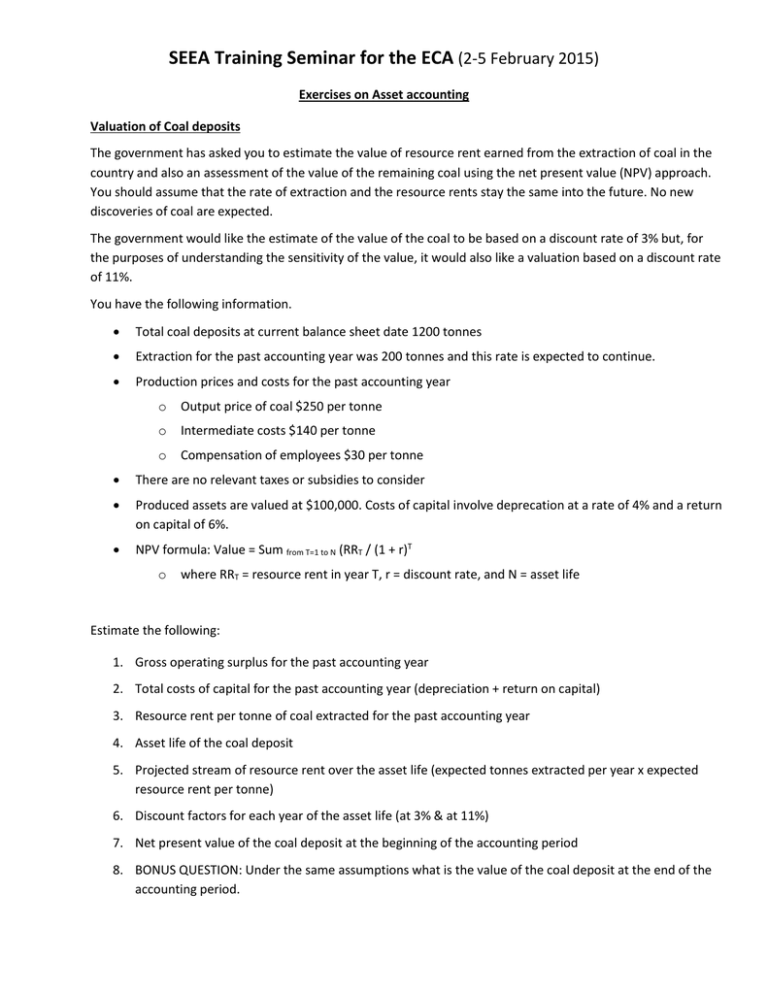SEEA Training Seminar for the ECA (2-5 February 2015)
advertisement

SEEA Training Seminar for the ECA (2-5 February 2015) Exercises on Asset accounting Valuation of Coal deposits The government has asked you to estimate the value of resource rent earned from the extraction of coal in the country and also an assessment of the value of the remaining coal using the net present value (NPV) approach. You should assume that the rate of extraction and the resource rents stay the same into the future. No new discoveries of coal are expected. The government would like the estimate of the value of the coal to be based on a discount rate of 3% but, for the purposes of understanding the sensitivity of the value, it would also like a valuation based on a discount rate of 11%. You have the following information. Total coal deposits at current balance sheet date 1200 tonnes Extraction for the past accounting year was 200 tonnes and this rate is expected to continue. Production prices and costs for the past accounting year o Output price of coal $250 per tonne o Intermediate costs $140 per tonne o Compensation of employees $30 per tonne There are no relevant taxes or subsidies to consider Produced assets are valued at $100,000. Costs of capital involve deprecation at a rate of 4% and a return on capital of 6%. NPV formula: Value = Sum from T=1 to N (RRT / (1 + r)T o where RRT = resource rent in year T, r = discount rate, and N = asset life Estimate the following: 1. Gross operating surplus for the past accounting year 2. Total costs of capital for the past accounting year (depreciation + return on capital) 3. Resource rent per tonne of coal extracted for the past accounting year 4. Asset life of the coal deposit 5. Projected stream of resource rent over the asset life (expected tonnes extracted per year x expected resource rent per tonne) 6. Discount factors for each year of the asset life (at 3% & at 11%) 7. Net present value of the coal deposit at the beginning of the accounting period 8. BONUS QUESTION: Under the same assumptions what is the value of the coal deposit at the end of the accounting period.


